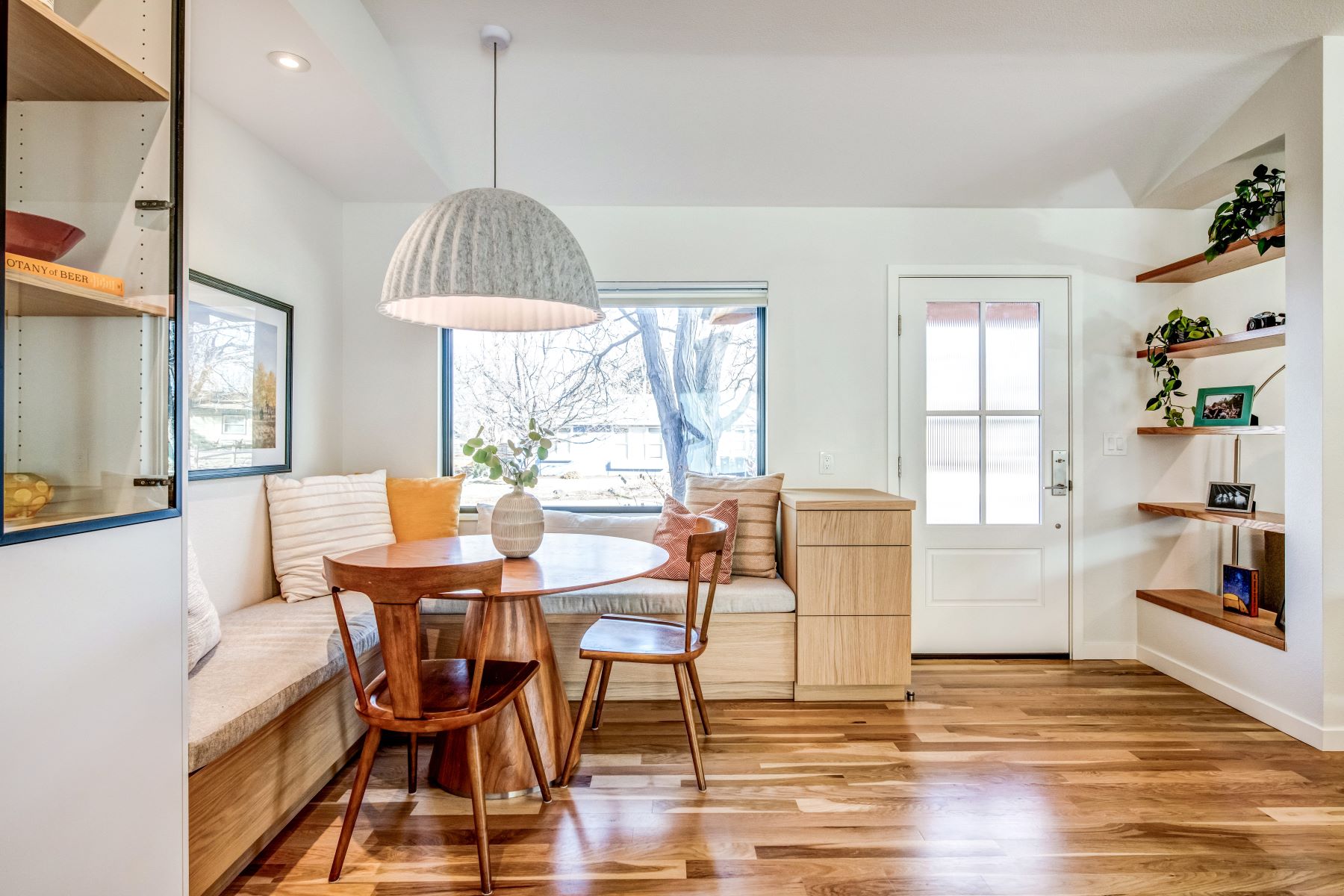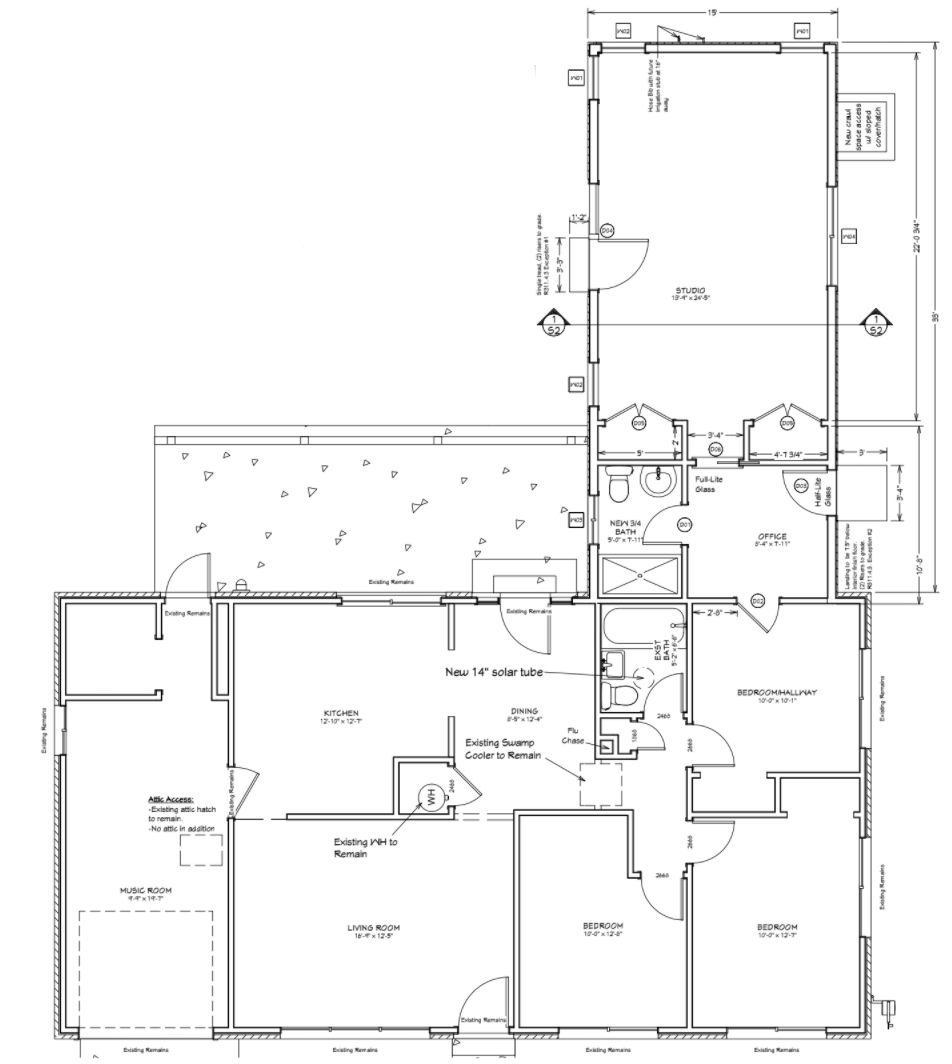To Add on to the Add-On Series…
We’ve compiled the four most popular ways people add square footage to their properties (Click here for that post.) This post will dive deeper into “The Rear Addition.”
Here’s a quick recap of the advantages of rear additions:
- Minimize changes to the existing house. Oftentimes we remodel a significant portion of the house in conjunction with the rear addition, but it’s not a requirement. Especially if the existing house has been recently renovated, you may not want to tear things up.
- Create favorable geometry with the backyard. A rear addition most likely will create a spot of outdoor living space that is protected on two sides and can become a lovely protected outdoor living area. The addition can create a cozier and more private backyard.
- One level living. For people who are aging in place or don’t like stairs, the rear addition is a great choice.
- Potentially more efficient use of square footage. One-story homes don’t have stairwells. Stairwells are in essence vertical hallways, and they require 70-100 square feet on each level.
I thought it would be fun to analyze two rear additions that SoBo built, and to highlight some of the considerations in the design.
The Primary Suite and Awesome Deck
This project was a 350 sq ft. addition on a 1-story ranch with a basement. The house already had a decent amount of square footage but only one main level bathroom, and no primary suite. Our solution was an efficient 1-story rear addition to accommodate a new primary bedroom, closet, and bathroom.
When adding onto a house that already has a basement, there are several options for the foundation. In this design, the homeowners decided they didn’t need any more basement square footage, so our foundation for the addition is only deep enough for a crawl space. This saves money in digging and concrete and the crawl space provides an efficient space in which to run the mechanical, plumbing, and electrical services.
One goal we have with most of our additions is for the new space to integrate into the existing so as to blur the lines between new and old. A sensible way to do this is to keep the new spaces on a similar scale to the existing house. Also, the homeowners didn’t want a huge sprawling primary bedroom, so the size of the this bedroom is only slightly larger than all the other bedrooms in the house. The windows and exterior doors on three sides bring a ton of light into the primary bedroom as well, adding to it feeling generous.
As mentioned in the bullet points above, a potential huge benefit to the rear addition is the natural courtyard that the addition creates. This design features a large deck with wrap around steps and a pergola structure to provide partial shade to the deck. The primary bedroom has a sliding patio door that opens up to the deck as well. Read more about decks here.
The Studio
The central focus of this design was to provide an away space for the family to play music. Jam sessions, lessons, and practicing music were an integral part of this family’s daily life and the incessant noise was becoming a problem.
As you can see, the heart of the addition is the studio space. We also added a bathroom and an office space with a side exterior door. The goal with these components was to allow other musicians to enter the house without disturbing the rest of the family. Friends can enter the side door, hang out and use the studio, use the bathroom, rock out, etc. without even having to knock on the front door. The office room also provides an acoustic buffer between the house proper and the studio space. With interior wall insulation and a weather-stripped interior door, the studio is truly free to be its own animal.
Lastly, another long term goal of the studio space was to remain flexible. We carefully considered window placement, lighting, outlets, furniture and closets so as to accommodate a wide variety of uses.
These projects are two examples of how we’ve greatly improved a home with a rear addition. Both of these projects solved acute problems with a modest increase in square footage.
photos by Christina Kiffney Photography




Comments are closed.